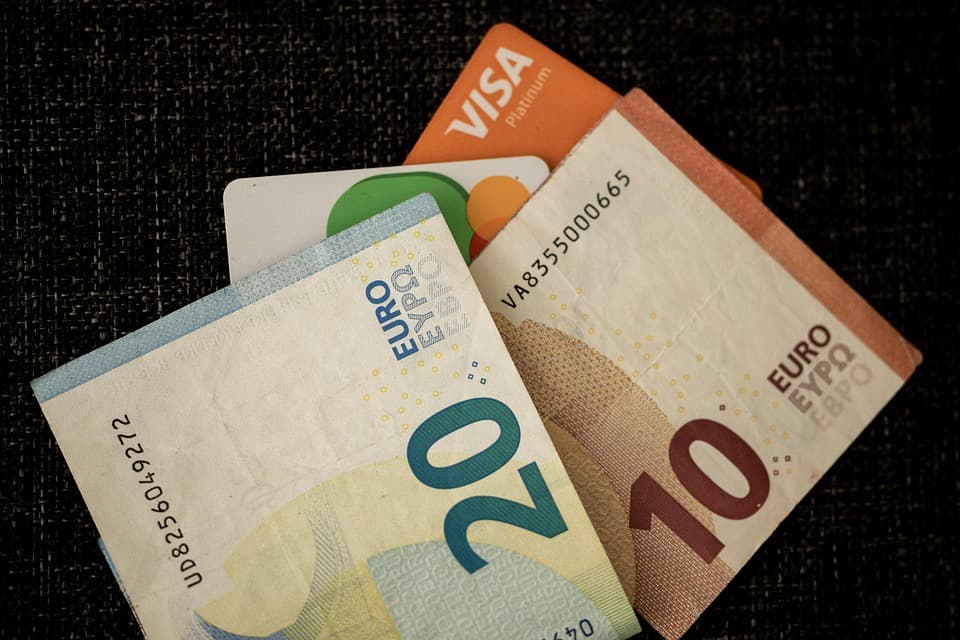Offering multiple payment methods: which ones should you offer your customers?

Introduction
You send your invoices, but your customers take weeks to pay? The problem may not stem from their lack of willingness, but simply from the payment method you offer. A customer who prefers TWINT will hesitate to make a bank transfer. Another accustomed to PayPal will find it tedious to enter your IBAN details.
In Switzerland, payment habits vary according to age, business sector and transaction type. Multiplying your payment options means making life easier for your customers and speeding up your collections. But it comes at a cost: transaction fees, monthly subscriptions, administrative complexity.
Between traditional bank transfer, credit cards, TWINT or PayPal, how do you choose the payment methods suited to your business? What are the real costs of each solution? How do you implement them in practice?
This guide compares the main payment methods available in Switzerland, their advantages, their costs and their practical implementation. You'll discover how to select the options that match your clientele and will improve your cash flow without increasing your overheads.
📌 Summary (TL;DR)
Offering multiple payment methods makes life easier for your customers and speeds up your collections. Bank transfer remains free but slow, whilst card and TWINT offer speed for fees of 1.5% to 3%. The choice depends on your clientele, your sector and the cost/benefit ratio.
To choose well, analyse your customers' preferences, evaluate transaction costs and adapt your options to your business. Communicate your payment methods clearly on your invoices to facilitate settlement.
📚 Table of contents
- Why offer multiple payment methods?
- Traditional payment methods in Switzerland
- Modern and mobile payment methods
- Comparative table: costs and characteristics of the main payment methods
- How to choose the right payment methods for your business?
- How to implement these payment methods?
- Communicate your payment options clearly
Why offer multiple payment methods?
Each customer has their own payment preferences. Some favour bank transfer, others prefer card or TWINT. By diversifying your options, you reduce friction and facilitate the act of paying.
Concrete result: faster collections and an improved conversion rate. A customer who finds their preferred payment method pays faster and more willingly. This directly impacts your cash flow and your liquidity management.
Traditional payment methods in Switzerland
Switzerland has a solid and diversified payment ecosystem. Traditional methods remain widely used, particularly in B2B relationships and for high-value transactions.
These proven solutions offer security and reliability, even if they sometimes lack speed. They often constitute the minimum base that any business must offer.
Bank transfer
Bank transfer remains the reference payment method in Switzerland, particularly in B2B. It generates no fees for the beneficiary and works with any bank.
Advantages: zero fees, universal, secure, traceable.
Disadvantages: 1 to 3 day delay, risk of input error, requires manual action from the customer.
The Swiss QR-invoice considerably simplifies the process by allowing payment information to be scanned, reducing errors and speeding up processing.
Card payment (Mastercard, Visa, etc.)
Card payment is suitable for online and in-store transactions. It's an instant solution appreciated by individual customers and many SMEs.
Advantages: immediate collection, familiar, good conversion rate, secure.
Disadvantages: transaction fees between 1.5% and 3%, requires a physical terminal or online payment gateway, installation costs and monthly subscription.
Ideal for e-commerce and physical points of sale.
Direct debit (LSV/DD)
Direct debit (LSV in Switzerland, Direct Debit) is perfectly suited to recurring payments such as subscriptions or monthly services.
Advantages: complete automation, guarantees regularity of collections, reduces non-payments, ideal for predictable revenue.
Disadvantages: requires a signed mandate from the customer, bank setup fees, less suitable for one-off payments.
To be favoured if your model relies on recurring revenue.
Modern and mobile payment methods
Digital solutions are transforming payment habits in Switzerland. Fast, intuitive and accessible from a smartphone, they particularly appeal to B2C customers and younger generations.
These online and mobile payment methods reduce collection times and simplify the customer experience. Their adoption continues to grow, particularly in e-commerce and services.
TWINT: the quintessential Swiss mobile payment
TWINT has established itself as the dominant mobile payment solution in Switzerland, with over 4 million active users. It's essential for any B2C-oriented business.
Advantages: massive adoption in Switzerland, instant payment, secure, simple interface, practical QR code.
Disadvantages: limited to the Swiss market, transaction fees of 1% to 2% depending on the contract, requires technical integration for e-commerce.
Essential if you target individual customers in Switzerland.
PayPal and electronic wallets
PayPal, Apple Pay and Google Pay offer international recognition and a simplified payment process. They are particularly appreciated for online purchases.
Advantages: global recognition, established trust, smooth process, buyer protection.
Disadvantages: high fees (2.5% to 3.5%), unfavourable exchange rates for international transactions, dependence on a third party, account blocking risks.
Useful for international e-commerce or to reassure foreign customers.
Cash payment: still relevant?
Cash retains a place in certain sectors such as local retail, crafts or catering. But its use is gradually declining.
Advantages: immediate collection, no fees, no technology required, appreciated by some customers.
Disadvantages: heavy administrative management, security risks, difficult traceability, incompatible with e-commerce, requires bank trips.
To be kept only if your business really requires it.
Comparative table: costs and characteristics of the main payment methods
| Method | Average fees | Collection time | Ease of setup | Ideal for |
|---|---|---|---|---|
| Bank transfer | 0 CHF | 1-3 days | Very easy | B2B, high amounts |
| Bank card | 1.5-3% | Instant | Medium | E-commerce, B2C |
| TWINT | 1-2% | Instant | Medium | B2C Switzerland, mobile |
| PayPal | 2.5-3.5% | Instant | Easy | International e-commerce |
| Direct debit | 0.5-1% | 2-5 days | Complex | Subscriptions, recurring |
How to choose the right payment methods for your business?
Not all payment methods are equal depending on your situation. The choice depends on your clientele, your business sector and your financial constraints.
A thoughtful approach allows you to optimise your costs whilst maximising customer satisfaction and your collections. Here's how to proceed.
Analyse your clientele and their behaviour
Your choice must above all match your customers' habits. A B2B clientele generally favours bank transfer, whilst individuals prefer card or TWINT.
Younger generations massively favour mobile payment. International customers appreciate PayPal or bank cards.
The most effective approach? Ask your customers directly about their preferences. Their answers will guide you better than any general statistics.
Evaluate the cost/benefit ratio
Transaction fees are not a dead loss: they must be compared to the benefits they generate. A payment method that costs 2% but speeds up your collections by 15 days improves your cash flow.
Calculate the real impact on your margins and your cash flow. Sometimes, paying fees to be paid faster costs less than an early payment discount.
The increase in conversion rate can also justify the costs.
Consider the nature of your business
Your business sector naturally guides your choices. An e-commerce business requires bank card, TWINT and PayPal to cover customer expectations.
B2B services can limit themselves to bank transfer and direct debit for recurring contracts. A physical shop favours card, TWINT and possibly cash.
Businesses with subscriptions or recurring payments greatly benefit from direct debit. Adapt your offering to your operational reality.
How to implement these payment methods?
Implementation varies considerably depending on the solutions chosen. Some require no particular steps, others demand technical integration and validation.
Here's a practical guide for each type of payment method, with concrete steps and expected timescales.
For bank transfer and QR-invoice
Good news: no specific steps are required. A Swiss bank account is sufficient to receive transfers.
For QR-invoices, invoicing software compliant with Swiss standards automatically generates QR codes with your bank details. BePaid creates these QR-invoices in a few clicks, allowing your customers to scan and pay directly from their banking app.
Setup: immediate. Cost: zero.
For card payments and mobile solutions
You must first choose a PSP (Payment Service Provider): Stripe, Datatrans, SIX Payment Services or Worldline are the main players in Switzerland.
Compare their offers according to transaction fees, features offered and ease of integration. Most offer APIs or plugins for common e-commerce platforms.
Technical integration requires a few hours to a few days depending on your infrastructure. Allow 1 to 4 weeks between signing the contract and going live.
For TWINT Business
Two options are available to you: direct registration via TWINT Business, or integration via a PSP that offers TWINT (Stripe, Datatrans, etc.).
Direct registration involves a validation process for your business (a few days). You then receive a static QR code for your shop or an integration for your website.
For e-commerce, technical integration via API is necessary. Some invoicing software also offers the generation of TWINT QR codes on invoices.
Communicate your payment options clearly
Offering multiple payment methods is pointless if your customers don't know about it. Clearly display the accepted options on your invoices, your website and your quotes.
Use recognisable logos (Visa, Mastercard, TWINT, PayPal) for immediate identification. Mention the options from the first commercial contact.
Briefly explain the procedure for each method if necessary. Transparent communication facilitates payment and improves the customer experience. Also consider the timing of sending your invoices to maximise fast payments.
Offering multiple payment methods to your customers is not a luxury, it's a necessity to facilitate transactions and speed up your collections. Bank transfer via QR-invoice remains essential in Switzerland for its compliance and simplicity. TWINT stands out as the local mobile solution par excellence, whilst bank cards and PayPal meet the expectations of a diverse clientele.
The choice of payment methods depends on your business, your clientele and the cost/benefit ratio of each solution. No need to offer everything: focus on the options that genuinely match your customers' habits and your business model.
To start simply, BePaid allows you to create compliant QR-invoices and track your payments in a few clicks. The free version offers you up to 10 invoices per month to test the solution without commitment. A solid foundation to professionalise your invoicing and improve your cash flow.


